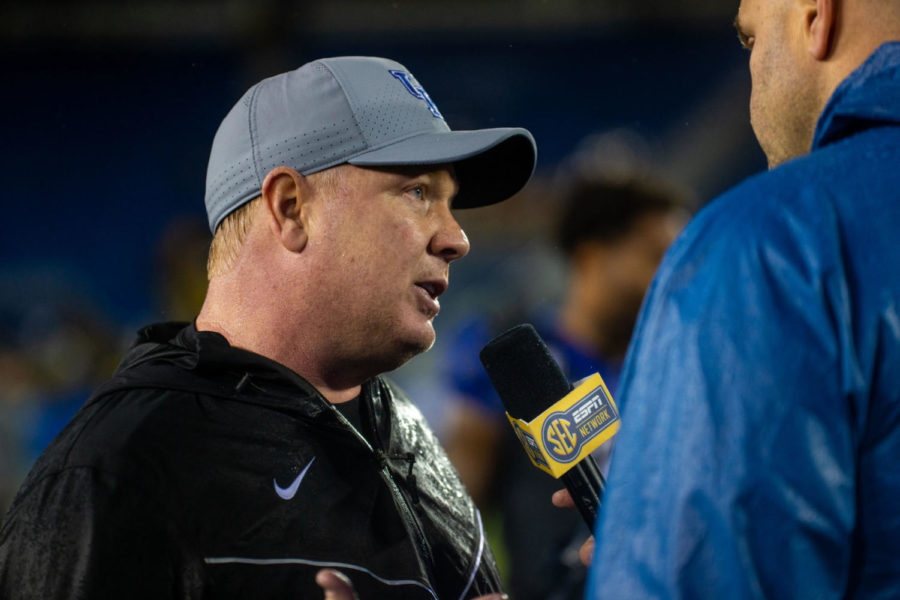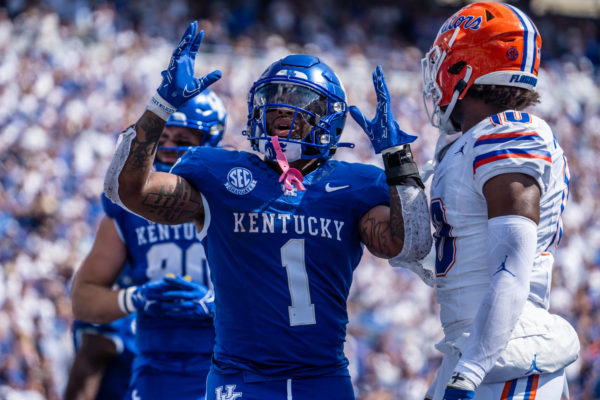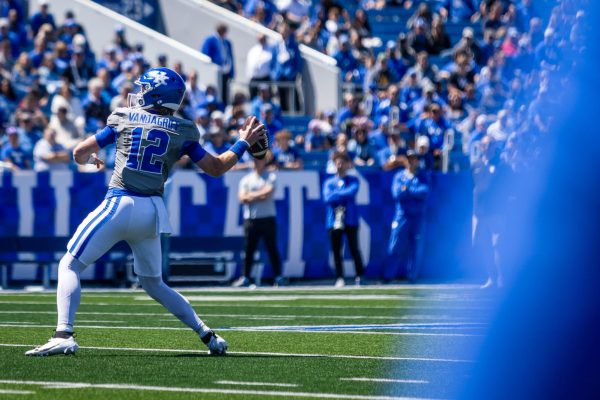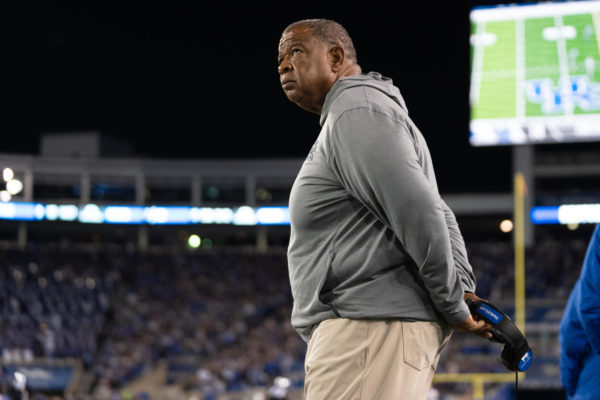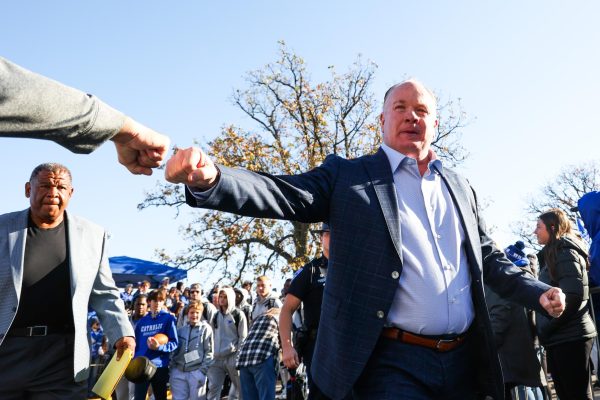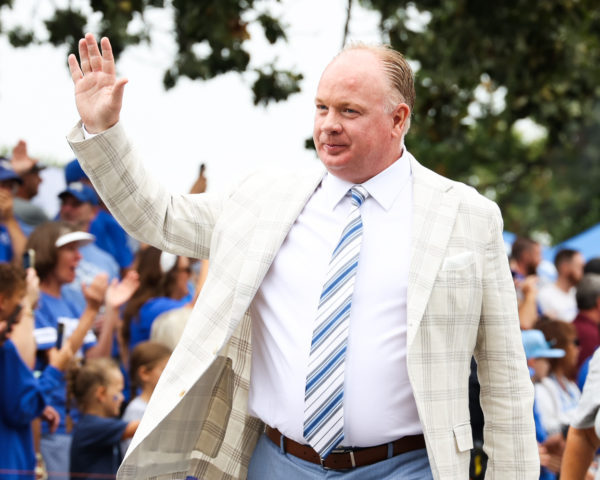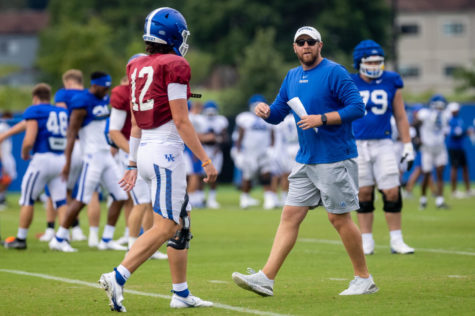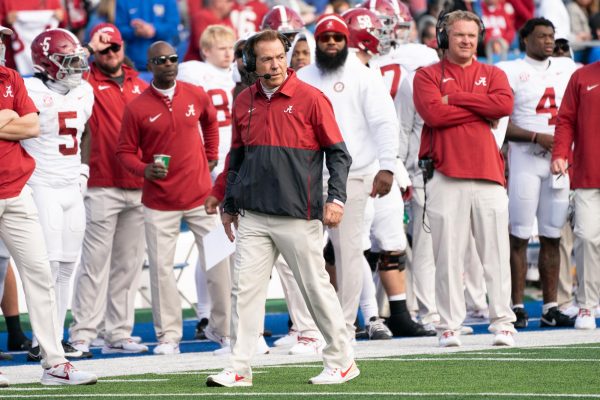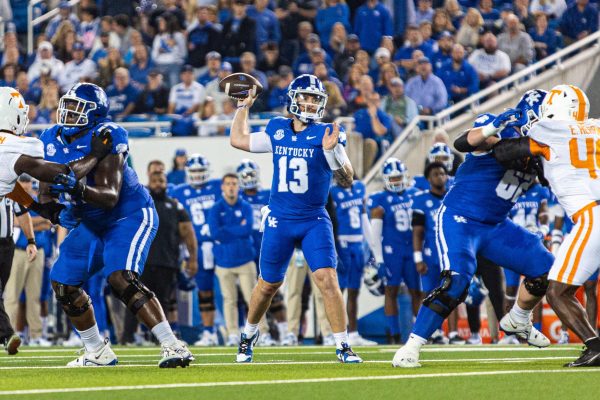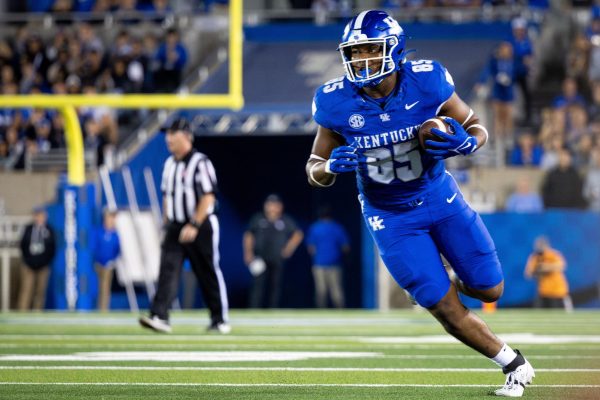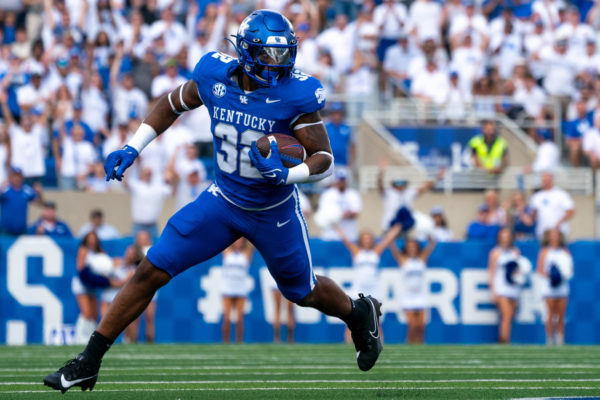Mark Stoops, other coaches and players respond to new NCAA likeness policies
Kentucky head coach Mark Stoops is interviewed following the game against Missouri on Saturday, Oct. 26, 2019, at Kroger Field in Lexington, Kentucky. Kentucky won 29-7. Photo by Jordan Prather | Staff
October 29, 2019
The NCAA took a big step forward when it announced on Tuesday that its Board of Governors unanimously voted to permit student-athletes to benefit from the use of their name, image and likeness in a manner consistent with the collegiate model.
There are multiple guidelines that the NCAA says it will work to ensure and maintain as this process unfolds. A big one is assuring student-athletes are treated similarly to non-athlete students unless there’s a special circumstance, a press release from the NCAA showed. Other guidelines include, but are not limited to, maintaining educational priorities, ensuring transparency and making clear distinctions with compensations of student-athletes.
UK football head coach Mark Stoops was asked about his thoughts on the new likeness plan during his only post-practice media availability late on Tuesday. He said that, while it’s “for the kids,” he still has some questions about the policies.
“Hopefully it’s progress in the right direction. I’ll continue to let the smart people make those decisions,” Stoops said. “There’s just so much to work out that I don’t have time to put bounds around it.”
Recruiting will play into the new likeness policies. UK recruiting coordinator Vince Marrow knows what goes into bringing fresh faces to Lexington. He said he knows things will be different now.
“I guess it will change the game in recruiting. We will have to have a meeting pretty soon as far as how we want to attack that,” Marrow said. “I’m always wanting the kids to get as much as they can get, but I wonder how they’re gonna govern that.”
Punter Max Duffy spoke briefly about his views on the new policies. A junior, the new policies likely won’t be implemented in time for him to benefit. As for his younger counterparts though, he says things might be looking good.
“You should get paid what you’re worth. You get what you deserve. There shouldn’t be a cap on what you can earn,” Duffy said. “For some guys, it’s well deserved.”
The board’s action was based on comprehensive recommendations from the NCAA Board of Governors Federal and State Legislation Working Group, which includes presidents, commissioners, athletics directors, administrators and student-athletes.
The group gathered input over the past several months from numerous stakeholders, the NCAA press release showed. These include current and former student-athletes, coaches, presidents, faculty and commissioners across all three NCAA divisions. The board says it also directed productive engagement with legislators.
This working group will continue to figure out how to work under the circumstances of state and federal legislation, the press release showed. Each NCAA division was asked to create new rules immediately, but by no later than January 2021.
These new changes come almost a month after California Gov. Gavin Newsom signed a law that would allow college athletes benefit from their likeness, effective in 2023. California is the first state to pass such a law. Other state legislatures are considering similar legislation.












































































































































